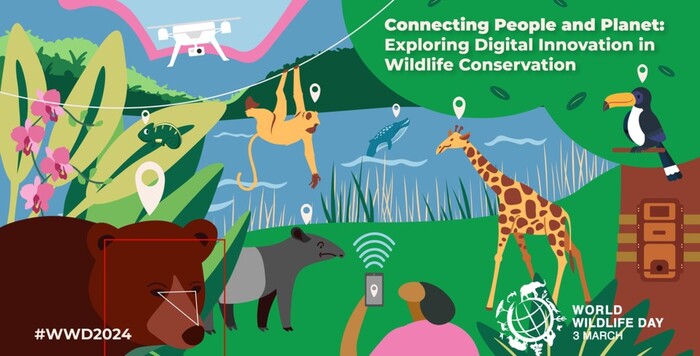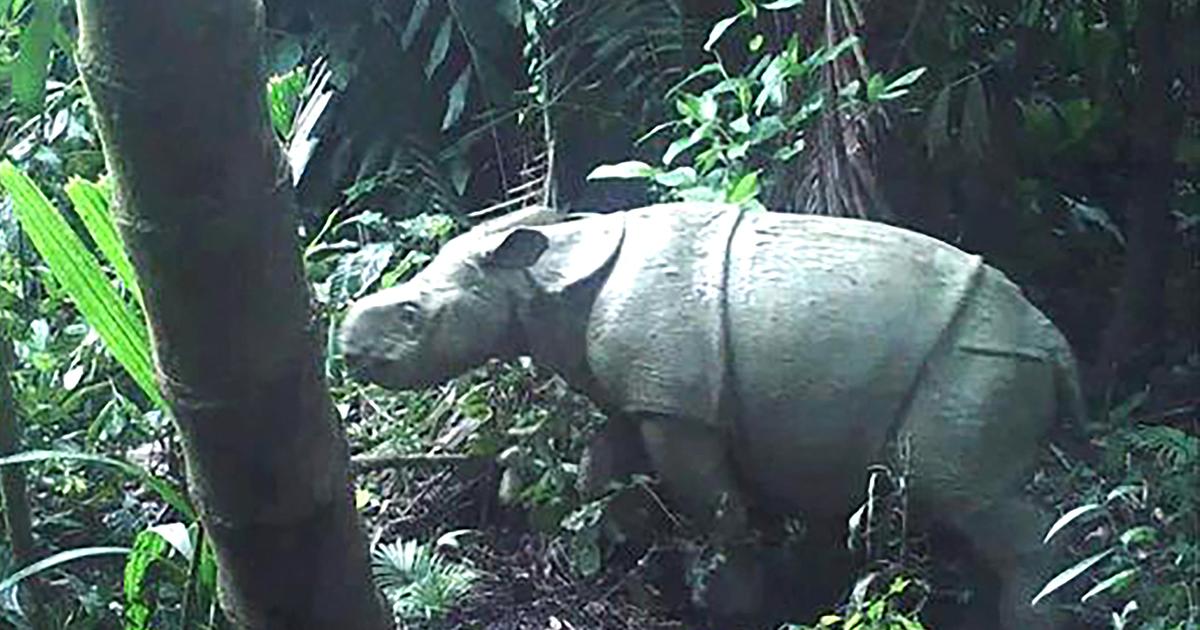Icon: enlarge
1/15
The Russian Sergej Gorschkow has been named "Wildlife Photographer" of 2020.
The winning picture shows an Amur tiger
hugging a tree.
The tiger species is considered critically endangered and only occurs in Siberia.
The photographer had waited eleven months for this unique moment.
Photo: Sergey Gorshkov / Wildlife Photographer of the Year
Icon: enlarge
2/15
The Natural History Museum in London awards the coveted prize every year.
"It's really spectacular,"
said Duchess Kate of the excellent photos.
The wife of the British Prince William is a photographer herself and was able to announce the winners.
This photo shows a great crested grebe family in Spain.
A parent animal carries one of the newly hatched chicks on its back, which eagerly snaps for a fish.
Great Crested Grebes are caring parents and feed their young until they are fully fledged.
Photo: Jose Luis Ruiz Jiménez / Wildlife Photographer of the Year
Icon: enlarge
3/15
Not all wild animals photographed live in freedom.
Here you can see a polar bear from the Russian "circus on ice".
It is the only known circus that keeps polar bears.
According to the circus, the four females were caught 18 years ago on the Franz-Josef-Land archipelago in the Arctic Ocean.
The young animals are said to have been orphaned.
Animal rights activists doubt it, however.
Photo: Kirsten Luce / Wildlife Photographer of the Year
Icon: enlarge
4/15
Practical: The biologist Alex Badyaev was able to observe his study objects
directly from the window.
A couple of the highland barnacle tyrant had settled in the Rocky Mountains of Montana at a remote research station of all places.
Usually, the birds, whose population is steadily declining in North America, nest in crevices.
Photo: Alex Badyaev / Wildlife Photographer of the Year
Icon: enlarge
5/15
This photo is the
best picture from France
: You can see a sand wasp (left) and a cuckoo wasp (right) approaching their nest holes.
While the sand wasp takes care of its brood itself, the smaller cuckoo wasp shoves its eggs under other insects.
When the larvae hatch, they eat the hosts' stores or their own eggs.
Photo: Frank Deschandol / Wildlife Photographer of the Year
Icon: enlarge
6/15
To take this picture, Briton Paul Hilton had to pretend to
buy
a
macaque
.
The monkeys are sociable animals, but are considered a nuisance in some regions of Indonesia.
As their habitat is getting smaller and smaller, they are increasingly invading fields and eating the crops.
Adult macaques are then often shot and the young are offered for sale, as in this market in Bali.
Photo: Paul Hilton / Wildlife Photographer of the Year
Icon: enlarge
7/15
This photo is from Liina Heikkinen from Norway.
The 17-year-old was named the
best young photographer
.
Your award-winning photo shows a fox tearing up a goose and not wanting to share its prey.
Photo: Liina Heikkinen / Wildlife Photographer of the Year
Icon: enlarge
8/15
A clownfish with an
unpleasant roommate
.
A parasite has stuck in his mouth.
The parasite's eyes are clearly visible in the photo.
The parasitic woodlice initially live as free-swimming males.
If they get into a fish via the mouth or the gills, they transform into females and suck on the tongue of their host.
Over
time, the tongue dies as a result
- the parasite now takes its place.
The clown fish is weakened by the parasite, but can continue to feed.
Photo: Sam Sloss / Wildlife Photographer of the Year
Icon: enlarge
9/15
Only in the dark did
this diamond squid
dare to
come out of its hiding place.
Songda Cai had photographed the animal off the coast of Anilao in the Philippines.
The squid is very young and just under seven centimeters tall.
So-called chromatophores just below the animals' skin contain elastic paint bags that can expand quickly when the muscles around them move.
This gives the animals their color.
Photo: Songda Cai / Wildlife Photographer of the Year
Icon: enlarge
10/15
This picture is
a real rarity
: Usually the shy Pallas cats show up very rarely.
Shanyuan Li had observed the rare animals in Tibet for six years before he succeeded in taking this picture.
Usually the loners overslept in crevices during the day, but these young animals had dared to come out of their shelter in an old marmot den.
However, if you want to watch the animals, you have to cope with altitude.
The kitten's hiding place is at
an altitude of 3800 meters
.
Photo: Shanyuan Li / Wildlife Photographer of the Year
Icon: enlarge
11/15
When migratory birds head south, the Eleanor's falcon is already waiting for them.
This specimen lives on the
Mediterranean island of San Pietro
and has snatched its prey from a flock of birds passing by and is now handing it over to its partner, who crouches protectively over the nest of the two.
When the chicks are fully grown, they all move south to winter in Africa, mainly Madagascar.
Photo: Alberto Fantoni / Wildlife Photographer of the Year
Icon: enlarge
12/15
Perfectly balanced: Andrés Luis Dominguez Blanco was hiding in the back seat of his car in Andalusia, Spain, in order
to be able to
take pictures of black goblets flying
by
without being noticed
.
The animals are found throughout Central and Southern Europe.
Your call sounds like two stones hitting each other.
This specimen had perched on a flower stem that warped noticeably from the weight of the bird.
But the black goblet kept the balance.
Photo: Andrés Luis Dominguez Blanco / Wildlife Photographer of the Year
Icon: enlarge
13/15
Frog eats spider: Jaime Culebras not only caught a rare meal in the Andes in northwest Ecuador, but also discovered
a new species.
The manduriacu frog, which is characterized by the yellow spots on its back and the lack of webbing between the fingers, is only found in this small area.
The reserve is private but is at serious risk from government-approved mining activities and illegal logging.
The new frog is considered critically endangered.
Photo: Jaime Culebras / Wildlife Photographer of the Year
Icon: enlarge
14/15
This proboscis monkey is relaxing in the sun on Borneo.
The primates got their name because of the powerful noses of the males.
Especially in older specimens, the noses become so large that the males have to push them to one side to eat.
This cub's nose will also continue to grow.
A large olfactory organ amplifies the animals' calls.
Proboscis monkeys only occur in Borneo and are threatened with extinction.
Photo: Mogens Trolle / Wildlife Photographer of the Year
Icon: enlarge
15/15
Stayed here: Although the significantly larger tiger beetle has already eaten several of its conspecifics, this weaver ant clings to the predator's leg.
Ripan Biswas recorded
the unusual
David
versus
Goliath battle of the insects
in India.
Photo: Ripan Biswas / Wildlife Photographer of the Year









